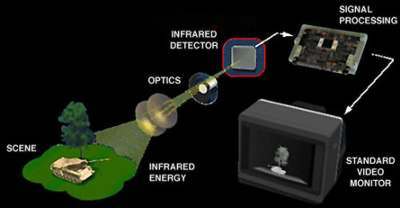
In the split second between the pressing of the shuttle release and the opening of the shutter, an automatic camera measures the distance between the lens and the subject and positions the lens to give sharp focus.
Most compact cameras have a tiny electric motor driving a transmitter that emits a beam of infrared light. The transmitter is linked to the lens, which moves in or out as the beam scans – focusing from near to far. The beam reflects back from objects to the camera, and a sensor monitors its signals and stops the transmitter when the strongest signal shows that the lens is in focus. This automatically triggers the shutter.
Some instant cameras have ultrasonic focusing similar to the echolocation scanning system bats use to navigate. A gold-plated disc (the transducer) sends out ‘chirps’ too high to be heard by human ears, each lasting 1/100th of a second. The disc receives the chirp echoes from the subject, and a built-in microcomputer measures the time each chirp takes to go out and come back. From this it calculates the distance to the subject.
SLR (single-lens reflex) cameras with an auto-focus use what is known as an electronic phase detection system. In this, light entering through the lens is separated into two images. A sensor measures the distance between the two images, which are a specific distance apart when the lens is in focus. If the distance is not correct, the sensor causes a motor to move the lens.
Picture Credit : Google

